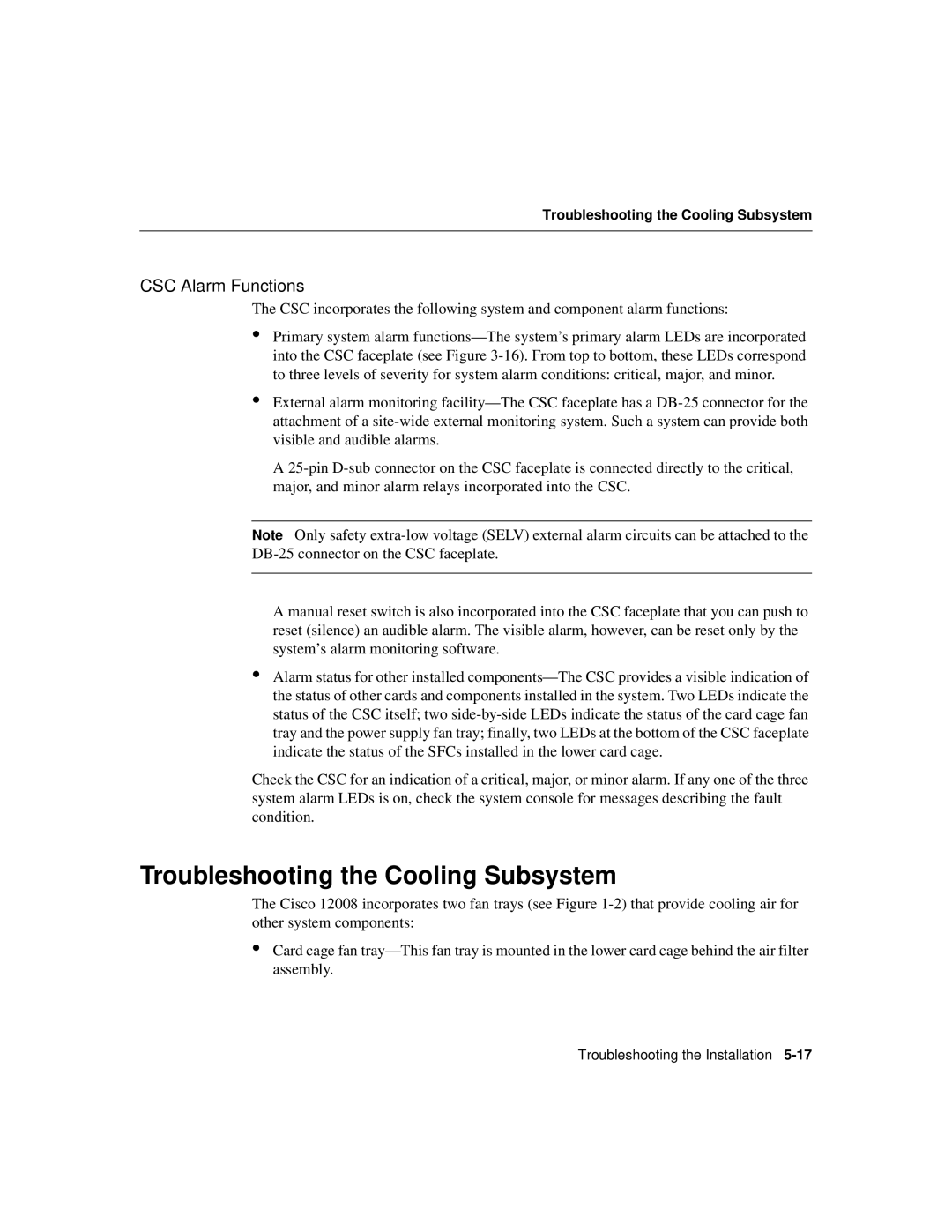Troubleshooting the Cooling Subsystem
CSC Alarm Functions
The CSC incorporates the following system and component alarm functions:
•Primary system alarm functions—The system’s primary alarm LEDs are incorporated into the CSC faceplate (see Figure 3-16). From top to bottom, these LEDs correspond to three levels of severity for system alarm conditions: critical, major, and minor.
•External alarm monitoring facility—The CSC faceplate has a DB-25 connector for the attachment of a site-wide external monitoring system. Such a system can provide both visible and audible alarms.
A 25-pin D-sub connector on the CSC faceplate is connected directly to the critical, major, and minor alarm relays incorporated into the CSC.
Note Only safety extra-low voltage (SELV) external alarm circuits can be attached to the DB-25 connector on the CSC faceplate.
A manual reset switch is also incorporated into the CSC faceplate that you can push to reset (silence) an audible alarm. The visible alarm, however, can be reset only by the system’s alarm monitoring software.
•Alarm status for other installed components—The CSC provides a visible indication of the status of other cards and components installed in the system. Two LEDs indicate the status of the CSC itself; two side-by-side LEDs indicate the status of the card cage fan tray and the power supply fan tray; finally, two LEDs at the bottom of the CSC faceplate indicate the status of the SFCs installed in the lower card cage.
Check the CSC for an indication of a critical, major, or minor alarm. If any one of the three system alarm LEDs is on, check the system console for messages describing the fault condition.
Troubleshooting the Cooling Subsystem
The Cisco 12008 incorporates two fan trays (see Figure 1-2) that provide cooling air for other system components:
•Card cage fan tray—This fan tray is mounted in the lower card cage behind the air filter assembly.

